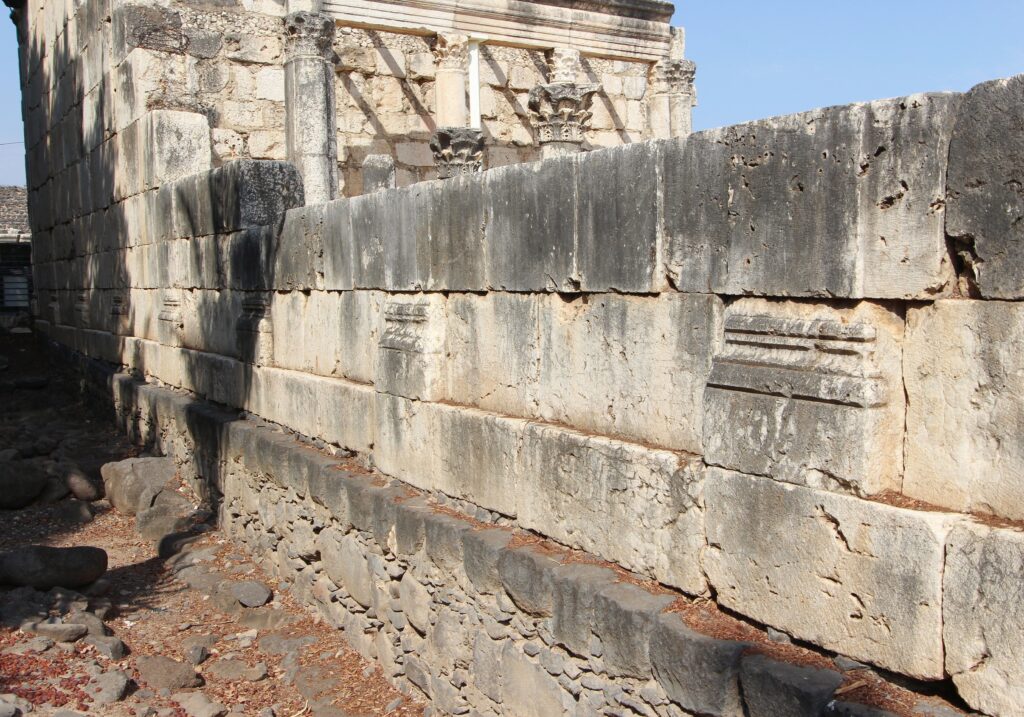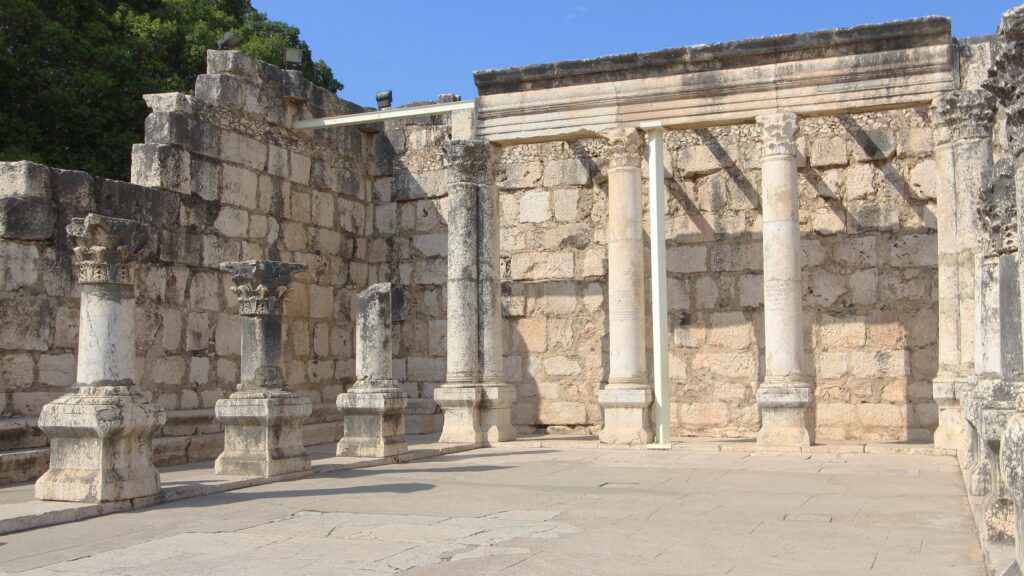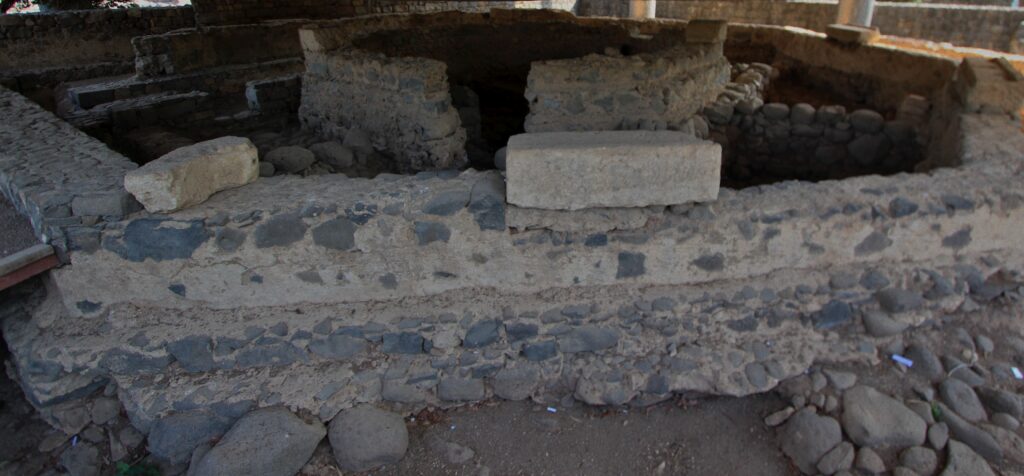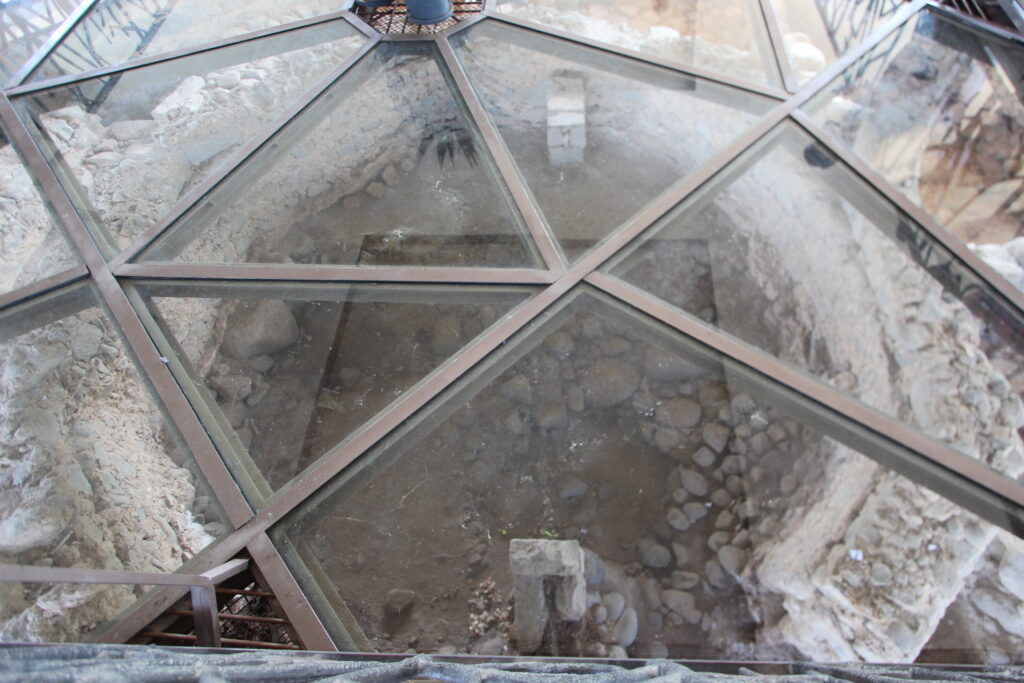Capernaum (meaning Village of Nahum) is referred to as “His own city” in Matthew 9: 1. It was His home during His ministry. At the time of Christ, it was the largest city on the banks of the Sea of Galilee. The district of Capernaum was perhaps the most populated in all of Israel. Because of that, it only makes sense that the Lord would base himself here.

The above shows the archeological period levels of the Capernaum Synagogue. The lower dark stone (basalt stone) dates to the time of Christ. Whereas, the lighter stone (limestone) dates to the 300’s AD.

The inside of the synagogue was richly decorated with pillars and capitals. Benches lining the outside walls provided limited seating. In the original synagogue below this one, the Lord gave his famous Bread of Life discourse (see John 6: 22-59). The Savior also healed a man possessed with a devil (see Mark 1: 23-29).

The above photo shows part of the excavated city of Capernaum. The city was home to Peter, Andrew, and Matthew. The modern flat, elongated church is built over the home of Simon-Peter. While not the prettiest church, it is highly functional as it has a central glass window allowing visitors to see down into Peter’s home without disturbing the remains. What you will see is a small rectangular room surrounded by a Byzantine church of three octagons each progressively larger as they radiate out from the rectangular room.


The room itself is exciting as it is one of the few places that can be confirmed through modern archeology. The central 1st century room was afforded special treatment. That is; it’s walls were plastered (not common for an average working-class person’s home). Excavators found plaster fragments with no fewer than 131 inscriptions written in Greek, Aramaic, Syriac, and Latin. Some fragments had the names written on the plaster: “Jesus,” “Lord,” “Christ,” and “Peter.” Many of the Lord’s miracles were performed here:
“And when Jesus was come into Peter’s house, he saw his wife’s mother lying, and sick of a fever. And he touched her hand, and the fever left her: and she arose, and ministered unto them.” Matthew 8:14-15.
“And at even, when the sun did set, they brought unto him all that were diseased, and them that were possessed with devils. And all the city was gathered together at the door. And he healed many that were sick of divers diseases, and cast out many devils; and suffered not the devils to speak, because they knew him.” Mark 1: 32-34.
“And again he entered into Capernaum after some days; and it was noised that he was in the house. And straightway many were gathered together, insomuch that there was no room to receive them, no, not so much as about the door; and he preached the word unto them. And they come unto him, bringing one sick of the palsy, which was borne of four. And when they could not come nigh unto him for the press, they uncovered the roof where he was and when they had broken it up, they let down the bed wherein the sick of the palsy lay. When Jesus saw their faith, he said unto the sick of the palsy, Son, they sins be forgiven thee. But there were certain of the scribes sitting there, and reasoning in their hearts, Why doth this man thus speak blasphemies? who can forgive sins but God only? And immediately when Jesus perceived in his spirit that they so reasoned within themselves, he said unto them, Why reason ye these things in your hearts? Whether is it easier to say to the sick of the palsy, Thy sins be forgiven thee; or to say, Arise, and take up they bed, and walk? But that ye may know that the Son of man hath power on earth to forgive sins, (he saith to the sick of the palsy,) I say unto thee, Arise, and take up thy bed, and go thy way into thine house. And immediately he arose, took up the bed, and went forth before them all; insomuch that they were all amazed, and glorified God, saying We never saw it on this fashion.” Mark 2: 1-12.
< Previous Post on First Century Boat
Nest Post onThe Temple of Jerusalem >
Return to Homepage
9 responses to “Capernaum “His own city””
Wonderful!!
Very informative. I enjoyed reading about Peter’s house which I don’t remember having any church etc attached when I visited in the 80s.
Hi Liz, The modern Church of St Peter, built over the remains of his house was built in 1989-1990. So it would be knew to you. Thanks for your comment.
I found this very informative, and wish I was reading it when we visited last year. It would have made the visit there even more special! Definitely worth the read if you’re planning to visit!
thanks Jana, I’m so glad you made the effort to visit the Holyland!
Absolutely wonderful.
thanks Simone
Great info Dennis! Expand!
Thanks Gary. Please ask your questions…